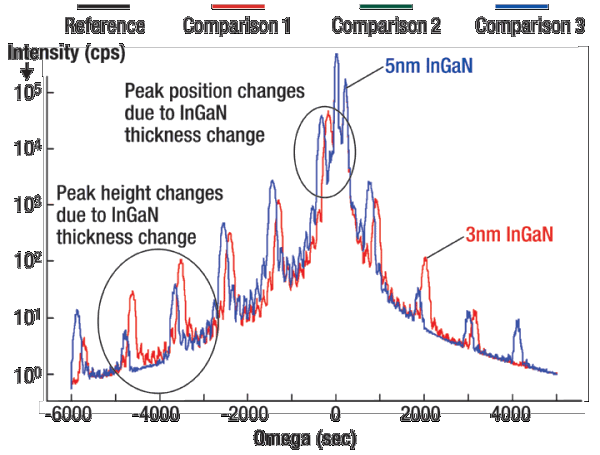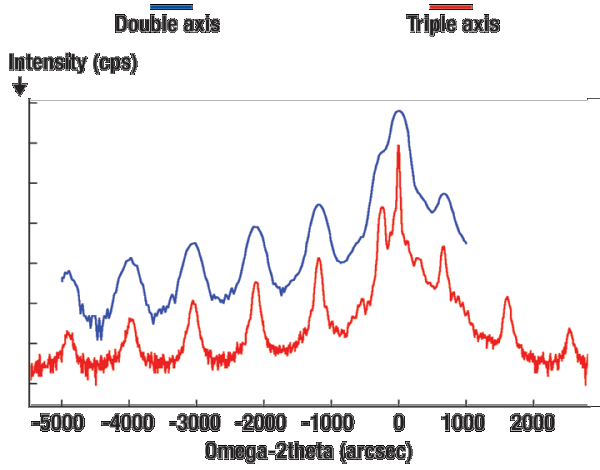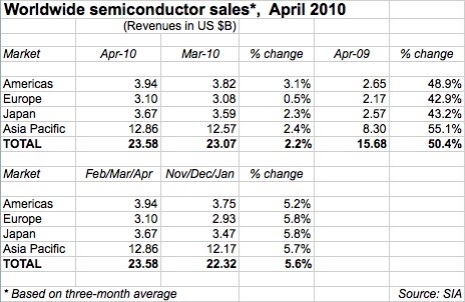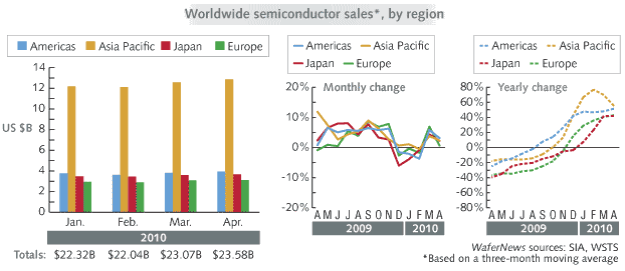June 25, 2010 – A three-day event put on by the Center for High-Rate Nanomanufacturing (CHN), one of four US nanomanufacturing centers and a collaboration of regional institutes (U. of Massachusetts/Lowell, Northeastern U., and the U. of New Hampshire), offered insights and updates on all things nano, from self-assembly and measurement techniques and requirements to applications in batteries, photovoltaics, and sensors.
Thomas Russell of UMass/Amherst discussed bottom-up self-assembling block copolymers, with the highly directional field & mobility of solvent, to create "perfect" hexagonally packed arrays (3×3 cm2) area, and areal densities of -10.5 TB/in2 — the equivalent of ~25 DVDs, he said. One problem: "the industry can’t write to it, and can’t read to it!" He suggested the data storage industry will have to push further into SSDs, though this will mean having to "push the limits" of etch and evaporation processes — e.g., etching along a crystal’s surface and controlled directionally. His team has not yet made such a high-density device, he noted.
JA Liddle from NIST looked at measurement challenges with the need to find a functional sweetspot of defectivity, high throughput, and tiny size. Measuring for "fundamental understanding" is too slow, expensive, and infrequent — but measuring for "process and quality control" is fast, cheap, and offers periodic/continuous results, both offline and in real time. He led this discussion into understanding more about self-assembly, which has limited control except for setting boundaries. Diblock copolymers can put small features close together, but measuring line-edge roughness with SEM looks "terrible," possibly because of damage caused by the technique itself. Resonant x-ray scattering, which can measure interfacial width/roughness to sub-0.5nm accuracy, he called "a lot more encouraging," and it can also be used for sidewall angles. For roll-to-roll diblock copolymers, techniques must be specific to the type of pattern being measured, and models must be developed for data extraction. A laser gauge sensor, he pointed out, looks a lot like a spinning HDD — so it’s feasible, he said. To follow the behavior of a single molecule, where Brownian motion limits dwell times, Liddle suggested tracking fluorescence correlation spectroscopy (FCS).
One challenge in measurements: morphological diversity in CNTs (single-walled, multiwalled, double-walled), which depend on finding the right combination of catalyst, temperature, precursor, pressure, etc. For now, measuring both process control and quality control (end-of-line) is "a really good problem statement," he said. Invoking the rule of "maximum laziness," he suggested defect location could be as simple as thermal examination (e.g., to find a short between two films, as in a PV application), but for a single pixel out of alignment, "near-field is the only chance."
Continuing on the CNT theme, David Arthur from CNT supplier Southwest Nanotechnologies (SWeNT, one of the event’s sponsors) noted the price/demand differences between the different types of CNTs. Multiwalled nanotubes are available in hundreds of tons/year, from lots of suppliers, at prices as little as $0.05/$0.50/g, for more general bulk applications. Single-wall nanotubes, meanwhile, are relegated to mainly niche coating applications due to their low volumes/availability and related high prices ($50-2000/g). But there’s an emerging opportunity in between, he said, that SWeNT wants to tap: specialty multiwall nanotubes (~3-6 walls), with better properties than normal MWNTs (e.g. easier to disperse, high ~10,000:1 aspect ratios), priced somewhat cheaply )$0.50-$50/g). SWeNT has ramped its output of CNTs to about 1kg/day, and plans to scale to 1 ton/day by 2012, while reducing costs by 10x. (He noted that the company’s products well exceed — though not with precise determination — industry standards (e.g., 90% semiconducting and 40% type [6,5]). Targeted applications include a CNT ink printable using standard manufacturing equipment, and printed LED lighting. Another key area is in new cathode materials for Li-ion batteries that meet cycle/life, low-weight, and cost needs. Initial data Arthur showed from RIT suggests comparable metrics to conventional cathode materials — same profile discharge, but better across cycling. Arthur also described fiber-reinforced fabrics (dipped in a CNT solution) for use as structural sensors, taking advantage of a correlation between measurable mechanical strain and conductivity. Such fabrics are already installed in two bridges in Alabama, he noted.
Asked about the biodegradability of CNTs — EHS is a critical concern with nanomaterials, and took up an entire day’s worth of presentations at the nano event’s first day — Arthur acknowledged that they are "likely to have a pretty high persistence in the environment," and the best approach may be to rely on encapsulation to "minimize their release."
Returning to self-assembly themes, Joey Mead of UMass/Lowell explained directed self-assembly with polymers, where current work emphasizes determining the effectiveness of the template and polymer blends. These blends can be assembled in 30sec with no anneal and in uniform patterns (e.g., 90o, T-junction, circle and square arrays). Patterning multiple length scales is possible, with 100-300nm spacing on a single template — her team wrote "CHN" using polymers (the name of the joint nano center). Key is knowing the interdependence and thus sweetspots of three factors: domain size, spin speed, and concentration. As an example, domain size and pattern pitch should be within 10% of each other. Mead also discussed work in transferring CNTs from a surface (e.g. PDMS stamp) — the opposite of what the previous speaker from SWeNT would want! — using a type of thermoforming similar to making yogurt cups: heat a polymer sheet, put the template into the base of the mold, and push it up to transfer. This works for conducting polymers as well as CNTs, she noted.
Tom Van Vechten, representing NanoComp (another event sponsor), talked about CNTs’ synthesis and application in thermoelectrics, where change in temperature is utilized to create electricity. (In cars, 44% of fuel is exhausted through the radiator, equivalent to ~10s of kW, he noted.) He discussed putting n-type and p-type semiconductors in series, and the company’s creation of a flexible CNT "felt" as an alternative generator material vs. typically Bi2Te3 — but as comparative numbers showed, there’s a very long way to go. "We have ideas about how to continue" the progress of CNT felt material, ultimately targeting $1/W in five to seven years. Possible application would be taped to the back of a solar collector to increase overall system output.
Morphology was the main topic of discussion for Konarka’s Eitan Zeira, as the company works to increase PV efficiency with a new polymer structure, and devising morphology is the main challenge for spontaneous phase separation and making polymers that stack up quickly. Efforts with PCBM only show up to 6% efficiency, he noted.
Another take on nano in PV was offered by Loucass Tsakalakos of GE Global Research Center, who talked about the group’s work on nanowire solar cells, which promise "excellent optical properties" (better than planar/solid thin film), angular dependence, and can be doped n- or p-type. GE developed the nanowire process flow from scratch, he noted. Asked how to apply back contacts to such a nanowire array, e.g. on a low-cost metal foil, he explained that there "a lot of considerations," e.g. developing different barriers, but they can grow the NTs on a 4-in. stainless steel metal foil. Another issue is depositing a uniform coating, i.e. with PECFD for SiO2. More work is needed to model, for example, electric fields, the effect of gas transport on the wires, etc. A prototype a-Si device initially showed just 1.2% efficiency in first tests, but he hinted that new results forthcoming later this year will show ~11%, using compound semiconductor devices — comparable to organic & inorganic PV materials.







